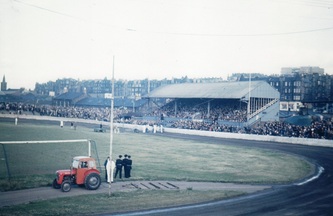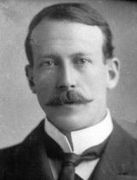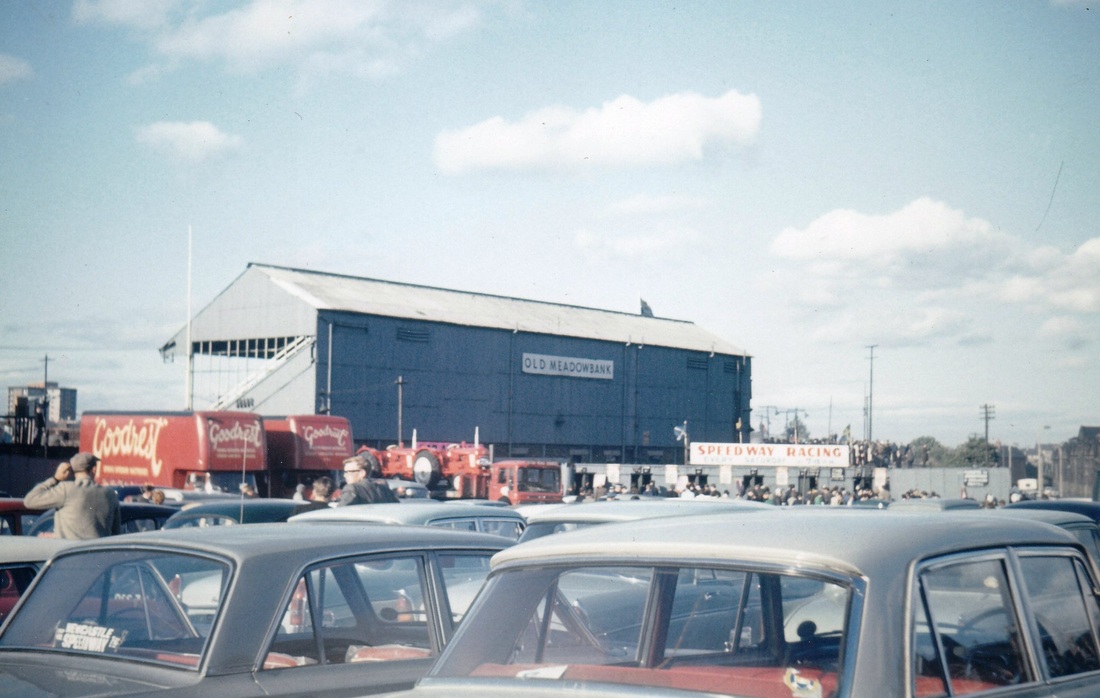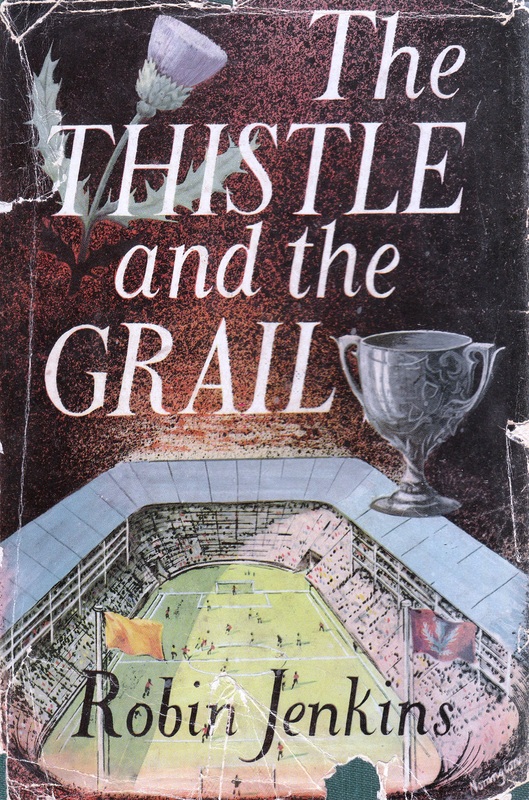
 These are views of a long-gone Edinburgh sports ground, Old Meadowbank, which was demolished in the 1960s to make way for the Commonwealth Games athletics stadium. In its later years it was primarily used by the Edinburgh Monarchs speedway team, who packed them in if this picture is anything to go by. However, it was also a football ground - you can see the goalposts above - and was home to Leith Athletic until their demise in 1953. These photos have not been published before, they came from a private collection, and are perhaps the only colour images of the ground.
1 Comment
 Golf is not a sport I claim to know much about, but I can at least take a certain pride that the only Scottish sports international player in my family was my great aunt, Flora Macbeth (1885-1970). She is in this photo, back row second left, with the Scottish Ladies international team that faced England in 1904 at Troon. She was a regular on the women's golf circuit in the early years of the century, although based in the south of England she didn't make too many appearances in Scotland. This was the first of three internationals, the last being in 1912 by which time she was listed as Mrs H Rigby, having married Hugh Mallinson Rigby the previous year. She was competing in the (British) Ladies Championship as late as 1920. There were actually several golfers in her family. Her older brother Norman Macbeth (1879-1940) was a golf course architect and is in the Southern California Golf Hall of Fame, no less. And another brother Allan Macbeth (1883-1956) was also a good player and married the famous golfer Muriel Dodd, who won the British Championship in 1913.  This is Stuart MacRae, who despite his fine Scottish name played football for England, winning five caps in 1883-84. He was a son of Duncan MacRae of Kames Castle on the Isle of Bute, and it was thought that Stuart had been born there. However, although he had indisputable Scottish ancestry, I have now found that he was in fact born on 7 December 1855 in Bengal, where his father was serving in the Indian Army. Stuart was sent back to Scotland for his education at The Edinburgh Academy, where he was captain of the school rugby team in 1872-73, and later moved south to Newark where he married into a brewing family. There, having switched to association rules, he played for Notts County and was duly capped by England. He also introduced golf to the town (this photo comes from the Newark GC) and was a decent cricketer for Gentlemen of Nottinghamshire. This discovery of his birthplace means that the only man to have been born in Scotland and played for England was John Bain, born to English parents in Bothwell, Lanarkshire in 1854. He moved south soon afterwards, won his one cap in March 1877 against Scotland while a student at Oxford University, and three weeks later he played for the University in the FA Cup Final. As pointed out by Alan Taylor in today's Sunday Herald, the centenary of the birth of Robin Jenkins is coming up soon, on 11 September. Jenkins is one of my favourite Scottish authors, not least because he wrote an outstanding novel about football, The Thistle and the Grail, published in 1954, near the start of his long writing career. To quote the book's opening paragraph:
'A thousand martyrs were being persecuted. Their howls of anguish mingled in one enormous snarl of lamentation that fluttered even the hardened sparrows on roofs around and made the women shoppers in the adjacent main street pause a smiling moment in their gossip. Drumsagart Thistle Junior Football Club was again being defeated at home, for the ninth time in succession; and its devotees were on the rack.' I wrote to Robin Jenkins in 2004, just a few months before his death, to ask about his inspiration for the novel and he kindly responded in an old man's spidery handwriting: 'I can still remember as a boy of 12 or so being lifted over the turnstile by some obliging man. This was at Somerville Park, home of Cambuslang Rangers. I remember too the joy of winning over the anguish of defeat. There was magic then, both on and off the park.' Pictured above is the (now very rare) first edition, but it is still in print. If you haven't read the book yet, I strongly recommend it. And don't just take my word for it: click here to read this appraisal by David McVey of its worth. |
Archives
July 2024
CategoriesAuthorAll blog posts, unless stated, are written by Andy Mitchell, who is researching Scottish sport on a regular basis. |


 RSS Feed
RSS Feed